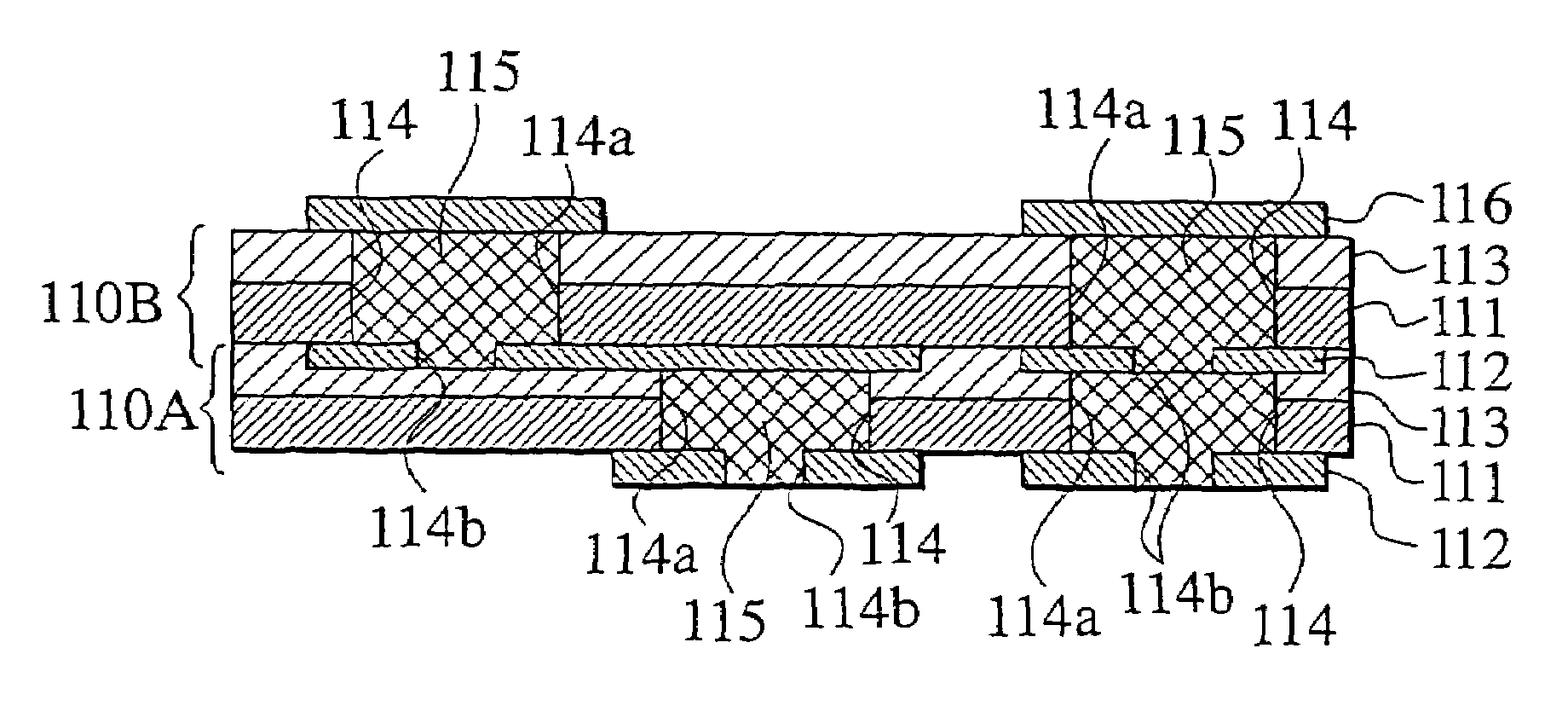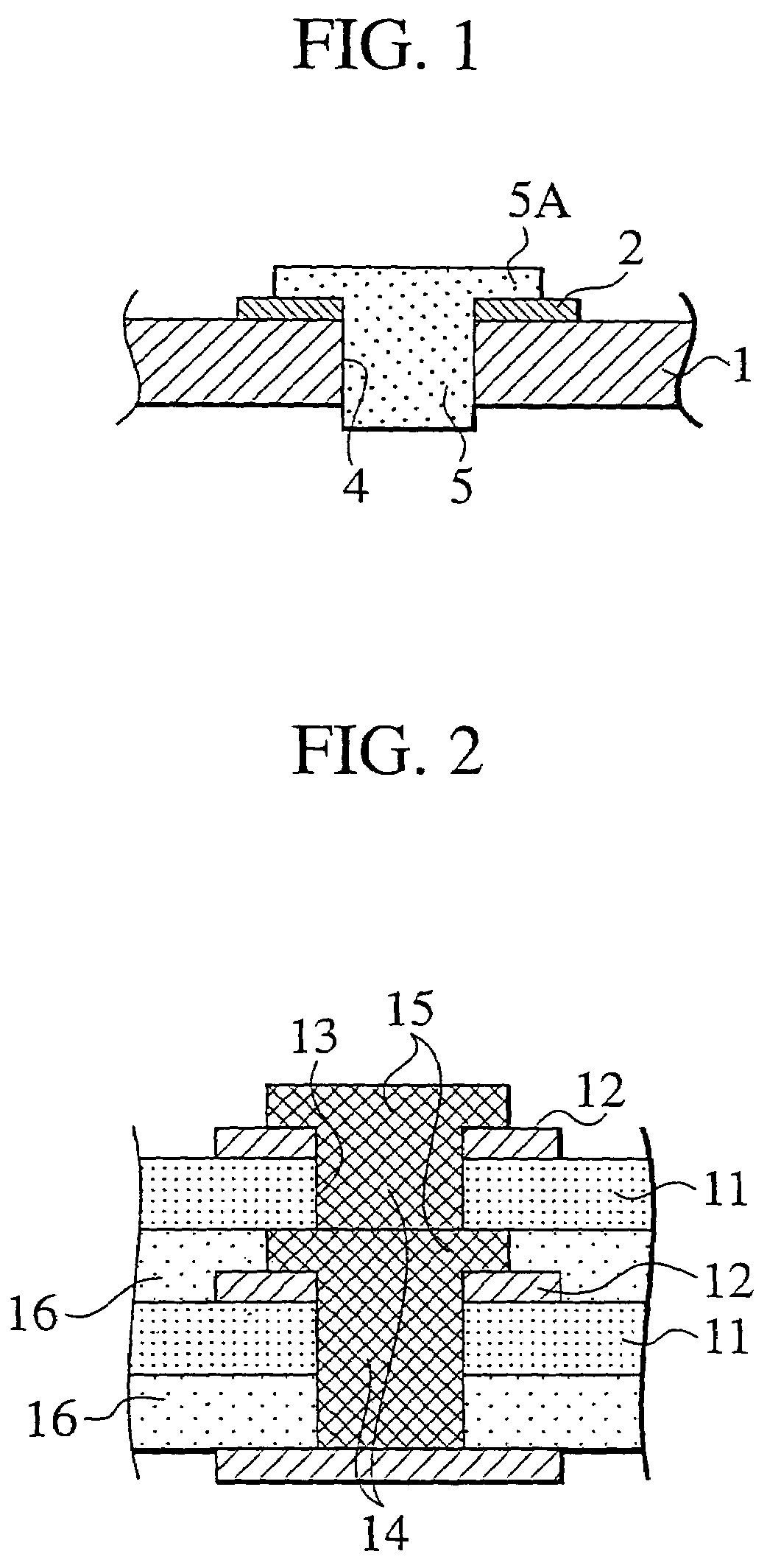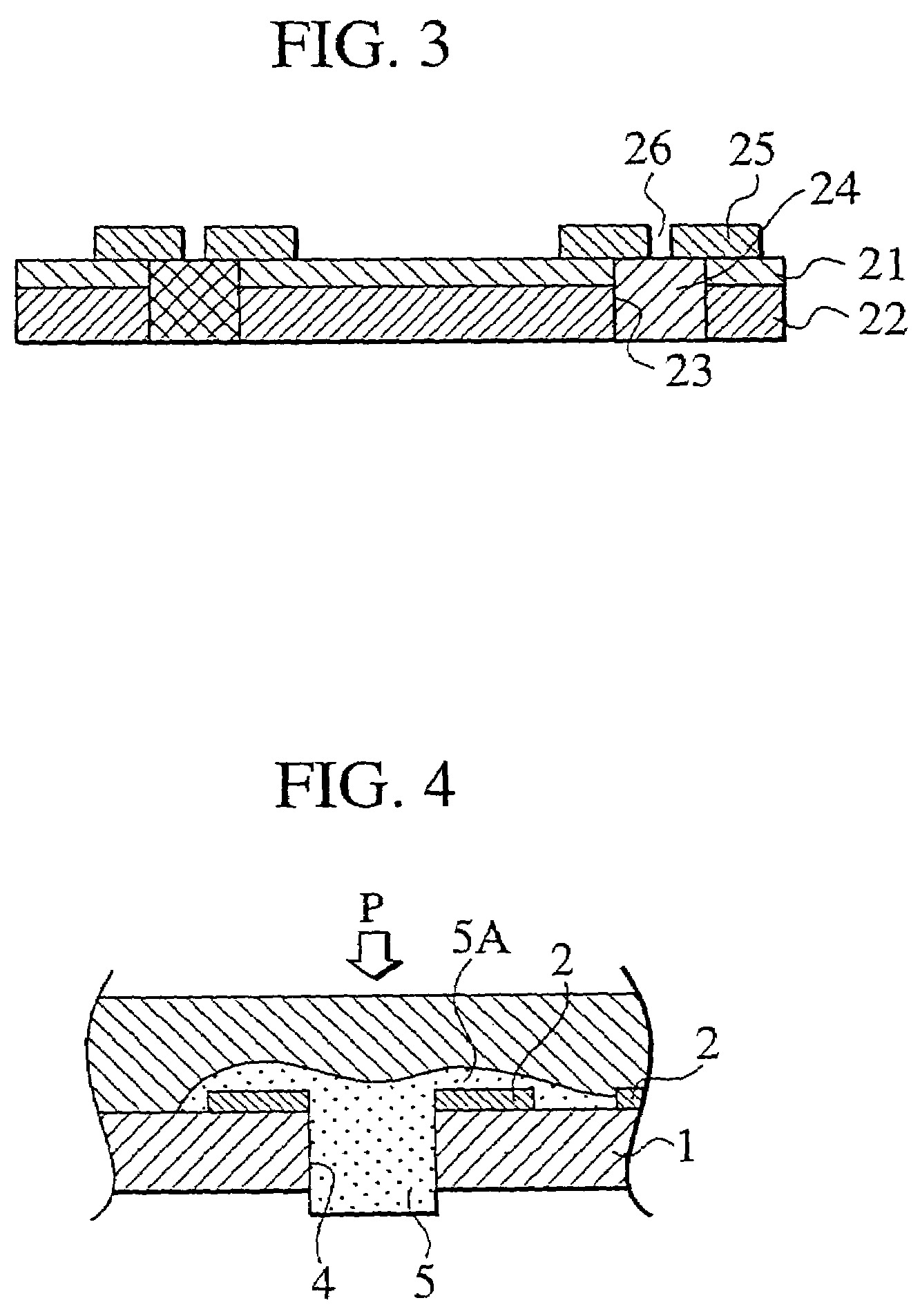Multilayer wiring board, base for multilayer wiring board, printed wiring board and its manufacturing method
a multi-layer wiring and wiring board technology, applied in the direction of printed element electric connection formation, semiconductor/solid-state device details, instruments, etc., can solve the problems of reducing the flexibility of circuit layout design, unable to mount a chip, and unable to meet the demands of high-density packaging, etc., to achieve the effect of increasing the contact area
- Summary
- Abstract
- Description
- Claims
- Application Information
AI Technical Summary
Benefits of technology
Problems solved by technology
Method used
Image
Examples
first embodiment
[0197]FIG. 7 and FIG. 8 show the basic configuration of multilayer wiring board assembly components in accordance with the present invention.
[0198]The multilayer wiring board assembly component as illustrated in FIG. 7 is composed of an insulating resin layer 111 as an insulating substrate component which is provided with a conductive layer 112 made of copper foil and the like as an electrode pattern on one surface of the insulating resin layer 111 and an adhesive layer 113 for interlayer connection on the other surface respectively with a through hole 114 formed that passes through the adhesive layer 113, the insulating resin layer 111 and the conductive layer 112. The through hole 114 is filled with a conductive resin composition 115 in order to form an IVH (via hole).
[0199]In the case of an FPC, the insulating resin layer 111 is composed of a flexible resin film such as a polyimide film, a polyester film or the like made of a wholly aromatic polyimide (API) and the like in order ...
second embodiment
[0248]In what follows, the second embodiment in accordance with the present invention will be explained in detail with reference to the accompanied drawings.
[0249]FIG. 17 shows the basic configuration of a multilayer wiring board assembly component in accordance with the second embodiment of the present invention.
[0250]The multilayer wiring board assembly component as illustrated in FIG. 17 is composed of an insulating resin layer 211 as an insulating substrate component which is provided with a conductive layer 212 of a copper foil and the like as an electrode pattern on one surface of the insulating resin layer 211 and an adhesive layer 213 for interlayer connection on the other surface respectively with a through hole 214 formed passing through the adhesive layer 213, the insulating resin layer 211 and the conductive layer 212. The through hole 214 is filled with a conductive resin composition 215 in order to form an IVH (via hole).
[0251]In the case of an FPC, the insulating resi...
third embodiment
[0278]FIG. 22 shows the basic configuration of a multilayer wiring board assembly component in accordance with the present invention.
[0279]In the multilayer wiring board assembly component as illustrated in FIG. 22, the insulating resin layer 221 itself, as an insulating substrate component, has adhesivity for interlayer connection and is provided with a conductive layer 222 made of a copper foil and the like as an electrode pattern on one surface of the insulating resin layer 221 while the through hole 224 is opened through the insulating resin layer 221 and the conductive layer 222. The through hole 224 is filled with the conductive resin composition 225 in order to form an IVH (via hole).
[0280]In the case of an FPC, the insulating resin layer 221 having adhesivity is formed of a thermoplastic polyimide (TPI) or a thermoplastic polyimide to which a thermosetting property is given. In the case of the use of a thermoplastic polyimide film, taking into consideration the heat resistan...
PUM
 Login to View More
Login to View More Abstract
Description
Claims
Application Information
 Login to View More
Login to View More - R&D
- Intellectual Property
- Life Sciences
- Materials
- Tech Scout
- Unparalleled Data Quality
- Higher Quality Content
- 60% Fewer Hallucinations
Browse by: Latest US Patents, China's latest patents, Technical Efficacy Thesaurus, Application Domain, Technology Topic, Popular Technical Reports.
© 2025 PatSnap. All rights reserved.Legal|Privacy policy|Modern Slavery Act Transparency Statement|Sitemap|About US| Contact US: help@patsnap.com



